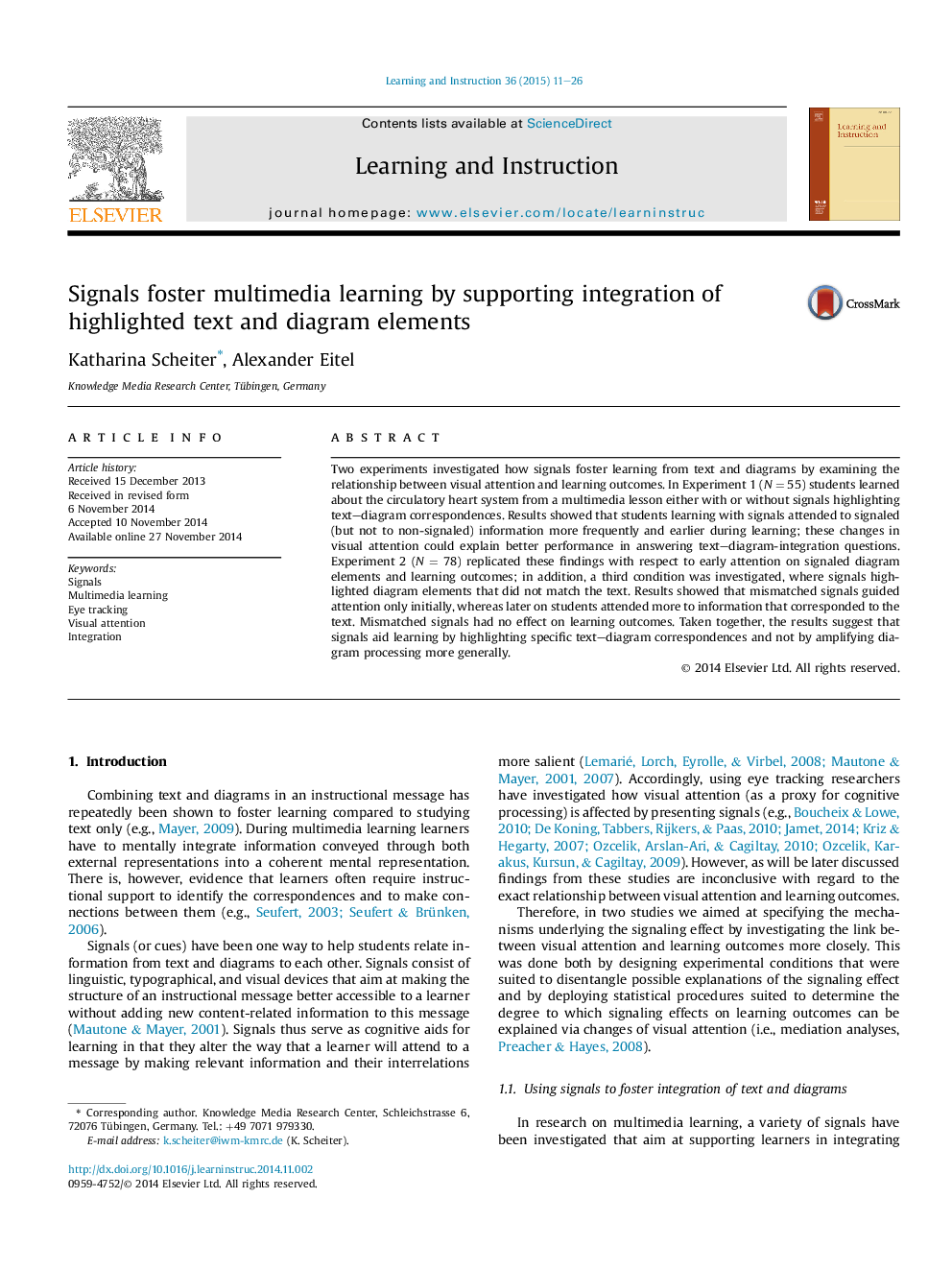| کد مقاله | کد نشریه | سال انتشار | مقاله انگلیسی | نسخه تمام متن |
|---|---|---|---|---|
| 365542 | 621201 | 2015 | 16 صفحه PDF | دانلود رایگان |
• Signals cause earlier attention towards signaled diagram elements.
• Signals cause more frequent attention towards signaled diagram elements.
• Changes in visual attention explain better learning outcomes.
• Mismatched signals affect initial attention similar to corresponding signals.
• Signals foster learning by highlighting specific text–diagram correspondences.
Two experiments investigated how signals foster learning from text and diagrams by examining the relationship between visual attention and learning outcomes. In Experiment 1 (N = 55) students learned about the circulatory heart system from a multimedia lesson either with or without signals highlighting text–diagram correspondences. Results showed that students learning with signals attended to signaled (but not to non-signaled) information more frequently and earlier during learning; these changes in visual attention could explain better performance in answering text–diagram-integration questions. Experiment 2 (N = 78) replicated these findings with respect to early attention on signaled diagram elements and learning outcomes; in addition, a third condition was investigated, where signals highlighted diagram elements that did not match the text. Results showed that mismatched signals guided attention only initially, whereas later on students attended more to information that corresponded to the text. Mismatched signals had no effect on learning outcomes. Taken together, the results suggest that signals aid learning by highlighting specific text–diagram correspondences and not by amplifying diagram processing more generally.
Journal: Learning and Instruction - Volume 36, April 2015, Pages 11–26
